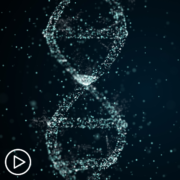Tag Archive for: ONUREG
Phases of AML Therapy | Understanding Treatment Options
Phases of AML Therapy | Understanding Treatment Options from Patient Empowerment Network on Vimeo.
What are the types and phases of acute myeloid leukemia (AML) treatment? Dr. Alice Mims, an AML specialist, defines induction, consolidation, and maintenance therapy for patients. Dr. Mims also explains the role of stem cell transplant and discusses promising new AML therapies.
Dr. Alice Mims is a hematologist specializing in acute and chronic myeloid conditions. Dr. Mims serves as the Acute Leukemia Clinical Research Director at The Ohio State University Comprehensive Cancer Center – James. Learn more about Dr. Mims.
Related Resources:

|

|
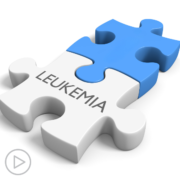
New and Emerging AML Therapies Being Studied in Clinical Trials |
Transcript:
Katherine Banwell:
I’d like to move on to treatment now, Dr. Mims. And, of course, treatment takes place in phases for AML. The first is induction therapy. Can you start by defining induction therapy for our audience?
Dr. Alice Mims:
Sure. So, induction therapy is really terminology that we use to talk about initial therapy for someone with a new diagnosis. So, we can have intensive induction therapies and non-intensive induction therapies. But the goal for either of those types of treatment is to get the leukemia into remission.
Katherine Banwell:
And what are the available treatment options for induction therapy?
Dr. Alice Mims:
So, to talk about that in a little bit more detail, for intensive induction regimens, those typically involve cytotoxic chemotherapy. So, you may hear terminology like, “7 + 3 induction,” or “high-dose cytarabine regimens,” but those are typically more intensive regimens that we use that can have increased side effects but may be very important based off the type of acute leukemia.
And then for non-intensive based regimens, one of the standards has really evolved to be venetoclax (Venclexta) and azacitidine (Vidaza) as a non-intensive regimen that can work very well for a majority of patients. And there are some off shoots of that as well.
Katherine Banwell:
Okay. And when does stem cell transplant come into play?
Dr. Alice Mims:
Sure. So, stem cell transplant is something that we all think about at the beginning for anyone with a new diagnosis of acute myeloid leukemia where as we’re working to get back genomic information about the individual’s acute leukemia, we may go ahead and start looking for different donors, doing typing, just in case that’s something that we need as far as someone’s therapy.
But typically we reserve stem cell transplant for patients who have either intermediate or high-risk features of their AML. Or who may have even favorable respite are not responding as well as we would like when looking at the depth of remission. And so, we always want to be prepared in case that’s something we need to move forward with as part of their care, if the goal of their treatment is for curative intent.
Katherine Banwell:
Let’s talk about what happens after the initial phase of treatment. What’s the purpose of consolidation therapy?
Dr. Alice Mims:
Sure. So, there are a few different purposes we can use consolidation therapy for. So, for patients – consolidation therapy is used for patients who have achieved remission. And then it’s either to try to hopefully get them cure of their AML. The patients have more favorable risk features of their AML and cure is an option through just chemotherapy alone.
Or it can be used to try to keep people in remission while we’re working to get towards stem cell transplant as that can sometimes take a few months to get a donor ready, have things ready to move forward with transplant.
Katherine Banwell:
And what are the options for consolidation therapy?
Dr. Alice Mims:
Sure. So, options for consolidated chemotherapy are typically based off of what you had initially for induction chemotherapy. So, if it’s more intensive-based regimens, it typically is consolidation with intensive consolidation, cytarabine-based (Cytosar-U) regimens.
For lower intensity regimens, typically consolidation is more continuing therapy on what you started but may have adjustments of the treatment based off of trying to decrease the toxicity now that the patients are in remission.
Katherine Banwell:
And how are patients monitored in consolidation therapy?
Dr. Alice Mims:
Sure. So, it definitely is based off of the individual’s type of consolidation chemotherapy or treatment. But most patients, if we feel like the treatment is going to lower blood counts, they have bloodwork twice a week, and we’re watching for things, for side effects for treatment, looking out for risk of infection, giving transfusion support, and then if something happens that we feel like we can’t support patients in an outpatient setting, then we’ll get them back into the hospital if they need to for care.
Katherine Banwell:
What side effects are you looking for?
Dr. Alice Mims:
So, most of the side effects with any of the treatments that we give are what we call myelosuppressives. So, it lowers the different types of blood counts.
So, white blood cell count which increases risk of infection, red blood cells, so, side effects or symptoms from anemia. And then risk of bleeding from low platelet counts.
Katherine Banwell:
Okay. Maintenance therapy has become more common in other blood cancers particularly in multiple myeloma. Is there a role for maintenance therapy in AML?
Dr. Alice Mims:
There actually is now, which is something that’s newer that has evolved for acute myeloma leukemia. So, in the context of intensive therapy, we now have oral azacitidine (Onureg), which is a little bit different than some of the IV formulations that we give.
But for patients who receive intensive induction therapy, get into remission and may receive consolidation but are not able to go onto transplant if they have that immediate or higher risk features, there’s FDA approval for oral azacytidine, which has been shown to improve overall survival and keep people in those remissions for longer.
More recently, specifically for patients who have a particular type of mutation called FLT3, if they also receive intensive induction therapy with a FLT3 inhibitor added onto that, then their quizartinib (Vanflyta) was just recently approved as a maintenance therapy for patients with that particular type of AML.
Katherine Banwell:
Are there emerging AML therapies that patients should know about other than what you just mentioned?
Dr. Alice Mims:
Sure. So, I think there are a lot of exciting treatments that are up and coming based off of many small molecule inhibitors that are being studied.
One in particular I would mention that everyone’s very excited about is a class of agents called menin inhibitors.
And so that’s an oral agent that has been shown to have responses for patients with relapsed or refractory AML who have NMP-1 mutations or have something called KNT2A rearrangements. And seeing responses with just a single agent in the relapsed/refractory setting, it’s been really exciting. And so, I think we’re hopeful that that may become FDA-approved in the near future. And it’s also now being explored in combination with intensive chemotherapies as well as less intensive induction regimens. And so, maybe we can do a better job with upfront treatment by adding these therapies on.
Challenges in Treating TP53-Mutated AML, Hope on the Horizon
Challenges in Treating TP53-Mutated AML, Hope on the Horizon from Patient Empowerment Network on Vimeo.
TP53-mutated acute myeloid leukemia (AML) treatment has some challenges. Dr. Naval Daver from the University of Texas MD Anderson Cancer Center shares his perspective. Learn about promising treatments on the horizon for this AML subgroup.
[ACT]IVATION TIP from Dr. Daver: “The TP53 mutation remains the most difficult subset of acute myeloid leukemia, there is hope on the horizon with new treatments such as CD47 antibodies and targeted therapies like APR that are being looked at, and also a strong consideration for allogeneic transplant in TP53, because this seems to be the only modality associated with a good chance of cure after achieving remission with one of the frontline therapies.”
Download Resource Guide en español
Related Resources:

|
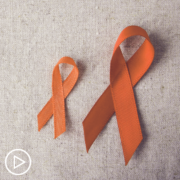
|
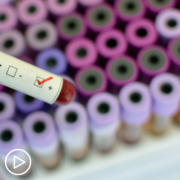
|
Transcript:
Art:
Dr. Daver, what have we learned about TP53-mutated AML? And what is the takeaway for these patients?
Dr. Naval Daver:
TP53-mutated AML remains the most difficult molecular subset of all acute myeloid leukemia. Patients who have this mutation, unfortunately, do not respond well to any of the established standard care therapies, including intensive chemotherapy, the HMA alone, such as azacitidine (Onureg or Vidaza), decitabine (Dacogen) alone, or even HMA venetoclax (Venclexta) with all of these, we do see responses, especially with HMA venetoclax or intensive chemotherapy, we can see 15 to 55 percent remission rate, but the remission, very short lived, early relapses and the median overall survival across all of these currently available standards of cares are between six to 10 months.
So there has been an intense effort in the last six, seven years to develop TP53-directed therapies or therapies that will work regardless of TP53 mutation, and there are two drugs this time that are very promising and being evaluated as ongoing Phase II and Phase III studies.
One of them is an immunotherapy drug called magrolimab which seems to have very similar activity and probability with good response rates in TP53-mutated AML. This has been completed in a single arm phase 1B study in front line TP53-mutated AML where we saw close to 50 percent CR, CRI complete permission rates. And median survival was above 11 months in older unfit TP53, which is better than any survival we have seen in the past in this population.
The other study was with the oral care targeted therapy towards TP53, called APR, and this therapy was specifically designed to target the TP53 mutation, and this is being evaluated in the frontline setting in combination with a society in venetoclax. We hope that these regimens are these novel therapies, one or both of them will be able to at least incrementally improve their current outcomes in TP53.
The other area where we have really been doing a lot of research, and I think the data is suggesting, is that allogeneic transplant may work for separate, and we are routinely considering transplant in these patients in the frontline setting, once they are able to achieve remission.
My activation tip is the TP53 mutation remains the most difficult subset of acute myeloid leukemia, there is hope on the horizon with new treatments such as CD47 antibodies and targeted therapies like APR that are being looked at, and also a strong consideration for allogeneic transplant in TP53, because this seems to be the only modality associated with a good chance of cure after achieving remission with one of the frontline therapies.
Share Your Feedback About [ACT]IVATED AML
What Does Triplet Therapy in AML Mean for the Future?
What Does Triplet Therapy in AML Mean for the Future? from Patient Empowerment Network on Vimeo.
What do acute myeloid leukemia (AML) patients need to know about triplet therapy? Dr. Naval Daver from the University of Texas MD Anderson Cancer Center shares his perspective. Learn about the meaning, progress, and outlook for triplet therapy.
[ACT]IVATION TIP from Dr. Daver: “Some of the early data with the FLT3 inhibitor as well as the CD47 antibody triplets are showing very, very promising activity and are now moving into larger multi-center and randomized studies.”
Download Resource Guide en español
Related Resources:

What Are Some Clinical Predictors for Relapse in Acute Myeloid Leukemia? |

|
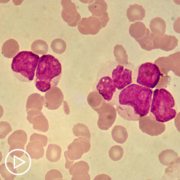
|
Transcript:
Art:
Dr. Daver, what does triplet therapy in AML mean for the future?
Dr. Naval Daver:
So when we say triplet therapy, what we’re really thinking about is building on the existing FDA-approved combination of HMA venetoclax (Venclexta), so as a background venetoclax, showed a CR, CRI which is a complete remission rate of about 70 to 75 percent with the median survival in 15 months.
This was in older patients, about 75 years in age, those who were not considered fit for intensive chemotherapy, although this was a major step forward in comparison to what we have seen with traditional low intensities with azacitidine (Onureg or Vidaza), decitabine (Dacogen) alone, we do see the three-year survival is about 25 to 30 percent.
So this is progress compared to 10 percent long-term survival, we used to get a decade ago, but, of course, we want to improve on that. Also, a molecular analysis of data has shown that there are certain molecular subsets that don’t respond as well to azacitidine, venetoclax or if they respond they relapse quickly these include FLT3 mutated and the TP53 mutated as well as potentially MLL rearranged.
And so here we have started incorporating the targeted therapies like inhibitors like the menin inhibitors like CD47 antibodies to target those specific high-risk or bad molecular cytogenetic groups, and we are seeing that with the combinations of these three drugs, especially for those particular molecular subsets.
So azacitidine and venetoclax for FLT3 inhibitor for FLT3 mutator, azacitidine, and venetoclax, magrolimab for TP53 mutated, the response rates that we’re getting, as well as the depth of response and the early trends towards survival are looking very, very promising compared to what we have seen with azacitidine venetoclax alone.
So we believe, and I personally believe that these three drug combinations, the so-called triplets will actually be eventually the way to go forward now, that means that one has to realize that when you add a third drug, there is a cumulative myelosuppression, azacitidine-venetoclax is already a myelosuppressive regimen.
Yes, it’s manageable, but it is myelosuppressive. And the third drug, this can become more cumulative, so we have been working for the last three, four years and continue to work on those optimization because since we are seeing true synergy but pre-clinically and what we think in the clinic, we are not needing to give full doses and we’re doing reduced durations of venetoclax and those with FLT3 inhibitor, and now we feel that some of those triplets are actually giving very, very, very good efficacy.
There’s a lot of discussion in the community of whether we need to combine all two drugs up front or can be sequence these drugs or can we introduce a targeted therapy based on a molecular escape, and I think a lot of these will have to be evaluated and many of these are being looked at in various trials, but I do think the bottom line is that bringing in your targeted therapy or immunotherapies early on in the frontline setting and some way or the other is probably where you’re going to get the most bang for the buck and the most benefit in curing patients long-term rather than trying to reserve them for the salvage, because in salvage AML historically, nothing has really been able to improve the long-term cure rate significantly.
So the activation tip for this question is that now with the identification of certain molecular subsets that have poorer outcomes with the HMA venetoclax, we have started incorporating targeted and immunotherapies in the earlier settings, either up front in the three drug combination or an early sequential approach.
And we believe that with such combinations, we may be able to achieve deeper remission and longer responses. Some of the early data with the FLT3 inhibitor as well as the CD47 antibody triplets are showing very, very promising activity and are now moving into larger multi-center and randomized studies.
Share Your Feedback About [ACT]IVATED AML
A Look at Lower Intensity Chemotherapy in Untreated AML
A Look at Lower Intensity Chemotherapy in Untreated AML from Patient Empowerment Network on Vimeo.
Dr. Naval Daver from the University of Texas MD Anderson Cancer Center discusses whether untreated acute myeloid leukemia (AML) can be treated with lower intensity chemotherapy.
[ACT]IVATION TIP from Dr. Daver: “Ask your physician and your oncologist when you’re talking with them about what all the newest therapies are and what would be specifically the best treatment for their specific leukemia with respect to the different mutations.”
Download Resource Guide en español
Related Resources:

|
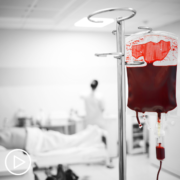
What Does Transfusion Burden Mean in Acute Myeloid Leukemia? |

|
Transcript:
Art:
Dr. Daver, what are we learning about patients with untreated AML who are ineligible for intensive chemotherapy? Will intensive chemotherapy, a thing of the past, in the near future?
Dr. Naval Daver:
There has been a major shift over the last four or five years towards using lower intensity combinations, such as azacitidine (Onureg or Vidaza) and venetoclax (Venclexta) and patients who are definitely about 75 and not fit for intensive induction. I don’t think anybody debates in that population, but even in patients 60 to 75 years away, you are borderline, and maybe we could give intensive induction chemotherapy and get patients to through it with support of care, antifungals, antibiotics by close monitoring, but we’re seeing similar remission rates with azacitidine (Vidaza), venetoclax (Venclexta), much less toxicity, less mortality, and especially the goal is to get a number of these patients to allogeneic stem cell transplant, which it is.
Then we feel that the lower intensity, better tolerated, smoother remission getting patients in a good condition an allogeneic transplant may be the way to go now, of course, to really make the standard of care, we have to look at this in a randomized fashion to make sure that what we believe is actually what the data is going to confirm, so there is an ongoing randomized study looking at the azacitidine and venetoclax intensity versus the traditional intensive chemotherapy called three plus seven in patients 18 to 65 years of age, and that…then you will, I think, give us a lot of information and data as for whether we can start for placing intensive chemotherapy for a large proportion or majority of AML patients, even those who are younger.
Today, I don’t think that in terms of chemotherapies are a thing of the past, I think those patients who are below 60 or even those who are 60 to 65, who are routinely doing intensive induction chemotherapy, one has to realize that the five-year survival for many molecular subsets are close to 50 to 60 percent with intensive induction chemotherapy, whereas with HMA venetoclax in the older unit, we’re looking at three to five-year survival rates of about 30 percent, so we have still not seen data and younger patients with Hamas to be convinced that this will replace intensive chemotherapy altogether, I think the signal suggests that there is a potential for it to do so, especially with the use of allergenic tensor as plan, which we’re using quite frequently and…or maintenance.
But that has not yet been established. So I would still say we do use intensive chemo in those who are young and fit, so my activation tip for this is that there has been a lot of progress in the lower intensity therapies over the last six or seven years.
A decade ago would not even be asking whether there’s anything that can replace intensive chemo today we do have data with HMA venetoclax that suggest that it may be as good as intensive chemo looking at the response rates MRD negativity, and especially with three drug combinations where adding targeted therapies to HMA venetoclax, those response rates and depth of response looking as good, if not better, than intensive chemo there are randomized studies ongoing that are going to be looking at intensive chemotherapy versus HMA venetoclax and if those show equivalents or superiority for HMA venetoclax, I think in the next five, six years there will be a huge shift towards less use of intense and chemotherapy in the frontline setting, but we’re not there yet.
Share Your Feedback About [ACT]IVATED AML
AML Clinical Trials Critical to Treatment Breakthroughs and Improvements
AML Clinical Trials Critical to Treatment Breakthroughs and Improvements from Patient Empowerment Network on Vimeo.
Why are acute myeloid leukemia (AML) clinical trials so critical? Dr. Naval Daver from the University of Texas MD Anderson Cancer Center shares his perspective about clinical trials. Learn how clinical trials help both current and future AML patients.
[ACT]IVATION TIP from Dr. Daver: “Clinical trials are critical, both for the patients themselves to get access to what we call tomorrow’s medicine today as well as potentially to help move the entire field forward.”
Download Resource Guide en español
Related Resources:
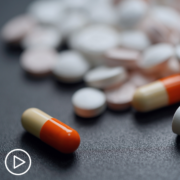
|

What Promising AML Treatments Are Available for Newly Diagnosed Patients? |

|
Transcript:
Art:
Dr. Daver, what is the importance of clinical trial participation as it relates to breakthroughs in AML, and what advice do you have for AML patients considering a clinical trial?
Dr. Naval Daver: Clinical trials are critical for the progress that we have already seen an acute myeloid leukemia, the drugs that have been improved in the last six, seven years, including venetoclax (Venclexta), FLT3 inhibitors, midostaurin (Rydapt or Tauritmo), gilteritinib (Xospata), hopefully quizartinib other emerging targeted therapies…IDH1, IDH2 inhibitors, menin inhibitors, CD47 antibodies, we’ve learned about all of them and have got approvals and many of them through the ongoing clinical trials.
I think it’s very important for patients to realize that in most large academic centers, we will only participate in the clinical trial if we think it has the potential to improve the standard of care in the future. There’s very little incentive for academic investigators or clinical investigators, such as myself, we’re very, very busy to get involved in a trial if we don’t think that it has the potential to improve the outcome or change the nature of AML therapy in the future, so a lot of patients often ask me, Oh, I want the randomized or placebo arm. There is no real placebo alone in any AML study that I’m aware of, most of the studies will use standard of care, which is what you would’ve gotten wherever you were getting treatment at home, locally, community hospital versus a standard of care plus where the new drug will be added, whether it’s the FLT3 inhibitor, the CD47 antibody, the menin inhibitor
So there’s a good chance, 50 percent that you’re going to get standard of care plus that we think has the potential to improve the outcome, of course, you never know, that’s what you do, the trial, but we think based on the previous pre-clinical data to pass when the page to deliver this looks like it will improve the outcome for this molecular or site group versus standard of care, which is what you will have gotten.
So I think it’s important to realize that you will never get less on standard of care and any clinical trial, at least in the AML field, and at least in our experience that they understand.
Now, beyond that, there’s also a Phase I in two states, and those are the ones that we focus on quite a bit at MD Anderson, these are single arm studies, meaning everybody will get the investigational agent combo, so azacitidine (Onureg or Vidaza) and venetoclax (Venclexta), we were one of the first sites to work on and leave this study and all of our patients in 2015, 2016, we’re getting this regiment, it was not approved to much later in 2019, 2020, and for those three, four years, our patients, hundreds of patients were able to get that combination, which probably cured many, many more than would have been cured to the standard of care until, of course, I’ve got a pro four years later, but for an option, of course, you cannot wait four years, so I’m a huge believer in clinical trials, I think it’s really, really important, both for the patients themselves as well as for the field, for us to be able to move the entire AML field forward for the next decade, and I would very strongly consider looking at or discussing with your treating physician trial options, and then you can look at them on your own through clinicaltrials.gov, or other sites with leukema and lymphoma that give a lot of information on clinical trials.
So my activation tip related to this question is that I think clinical trials are critical, both for the patients themselves to get access to what we call tomorrow’s medicine today as well as potentially to help move the entire field forward, all of the clinical drug approvals in progress we have seen in AML in the last six, seven years have come through clinical trials that patients in the past have agreed to kindly participate and helped probably themselves by getting better medications and combinations, and definitely the field to move forward, so definitely a big proponent for clinical trials.
Share Your Feedback About [ACT]IVATED AML
AML Treatment Approaches Expand for Older and High-Risk Patients
AML Treatment Approaches Expand for Older and High-Risk Patients from Patient Empowerment Network on Vimeo.
How have acute myeloid leukemia (AML) treatment approaches expanded for older and high-risk patients? Dr. Naval Daver from the University of Texas MD Anderson Cancer Center shares insight about additional treatment options. Learn about the potential for long-term cures for these patient groups.
[ACT]IVATION TIP from Dr. Daver: “There is a dramatic progress, especially in the treatment of older unfit AML with the approval of the azacitidine-venetoclax combination.”
Download Resource Guide en español
Related Resources:
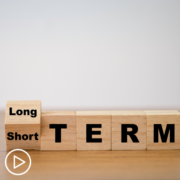
Long-Term Effects Acute Myeloid Leukemia Patients Should Know |

|
Transcript:
Art:
Dr. Daver, for older and high-risk AML patients, how are the treatment approaches expanding?
Dr. Naval Daver:
In older and high-risk AML, the major approval has been the combination of azacitidine (Onureg or Vidaza) and venetoclax (Venclexta), which is a BCL-2 inhibitor, the regimen was evaluated in a large Phase III study called the VIALE study, where we looked at the standard of care for the last two decades for older unfit AML, which azacitidine alone versus the combination of azacitidine and venetoclax and this combination showed a three times higher remission rate, 75 versus 28 percent overall remission rate as well as an improvement in overall survival and long-term survivors.
So this has led to great progress with now remission rates of 75 percent achievable in older unfit AML and many of them being durable at three years with ongoing follow-up, so this has really opened the door for us to be able to treat patients up to 75, 80, 85 years of age with effective therapy given the three parts of these to achieve remission, which is usually associated with freedom from transfusion improvement, quality of life, improved energy, less time in the hospital, less infections.
The other progress now is coming from the use of targeted therapies as well in these populations, and even though the HMA venetoclax or azacitidine combination is doing very well.
We now have data, in fact, from the ASH 2022 December meeting that at three years, about 25 percent or so I would still remain alive with azacitidine was even or 8 percent, now it’s 25 percent. But, of course, we want to do much better than that, and so this is where we are incorporating the targeted therapies, the FLT3 inhibitors, the IDH1, IDH2 inhibitors, menin inhibitors, and immunotherapies onto the backbone of azacitidine-venetoclax, which we hope will further improve that long-term survival cure from 25 to hopefully 50 to 60 percent and beyond.
So a lot of progress, you know, going from less than 10 percent, a 30 percent survival, long-term, and I think in the next few years, even up to 50 percent with some of these new combinations. The activation tip related to this question is that there is a dramatic progress, especially in the treatment of older unfit AML with the approval of the azacitidine-venetoclax combination.
This regimen is now giving high remission rates, which approximate remission rates that are seen with traditional intensive chemotherapy without the mucositis and toxicities and better volatility, and we are now working to further improve the remission and the durability of this dominant of initial.
…potentially adding targeted therapy such as FLT3 inhibitors, IDH1, IDH2 menin inhibitors, and we think that potentially in the next decade, we could be achieving long-term cures in a large proportion of older unfit AML, which was something one could just dream of a decade ago.
Share Your Feedback About [ACT]IVATED AML
What Promising AML Treatments Are Available for Newly Diagnosed Patients?
What Promising AML Treatments Are Available for Newly Diagnosed Patients? from Patient Empowerment Network on Vimeo.
What do newly diagnosed acute myeloid leukemia (AML) patients have for promising treatment options? Dr. Naval Daver from the University of Texas MD Anderson Cancer Center discusses progress in available treatments. Learn about therapies determined by key factors.
[ACT]IVATION TIP from Dr. Daver: “It’s very important to really consider all the available treatment options and if needed to seek consultation with an expert or academic center to get the most up-to-date treatments available for AML.“
Download Resource Guide en español
Related Resources:

|
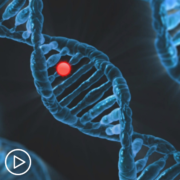
|

|
Transcript:
Art:
Dr. Daver, for newly diagnosed AML patients, what are the latest and most promising available therapies?
Dr. Daver:
For newly diagnosed AML at this time, the most promising agents include targeted therapies and BCL-2 inhibitor treatments, these are non-chemotherapeutic drugs, and we’ve seen great progress in the application of these as well as recent FDA approvals.
So one of these is an agent called venetoclax (Venclexta), which is a BCL-2 inhibitor and venetoclax in combination with hypomethylating agents such as azacitidine (Onureg or Vidaza) has shown a response to close to 75 percent.
And the nice thing is that this regimen can be given and patients who are older than 70, 75 years of age, and even those who are having comorbidities are not fit for traditional intensive chemotherapy with similar response rates, so this has been approved in the last couple of years for the frontline treatment of AML, and we’ve been using this combination of venetoclax and azacitidine quite frequently with high efficacy in this patient population, the other new agents that have shown breakthroughs in AML are the targeted therapies, these include FLT3 inhibitors that target the FLT3 mutation and these have shown good activity, but the single agents with gilteritinib (Xospata) being approved in the relapsed refractory setting as a single agent where gilteritinib showed a response rate of about 50 percent as a single oral targeted therapy in relapsed FLT3-mutated AML, which is actually better than the response rate with high-dose combination more where the response rate is only about 25 to 30 percent.
So, gilteritinib is now approved, and it’s now moving and being evaluated in frontline setting other FLT3 inhibitors like lestaurtinib (CEP-701), actually just recently completed frontline studies showing improved outcome when lestaurtinib added to intensive chemo versus just intensive chemo in FLT3 in AML. And we hope and think there’s a good chance lestaurtinib will be approved in the near future.
And also IDH inhibitors have been approved both in the relapsed setting, frontline setting, and now we even have a third group of targeted therapy is called the menin inhibitors, they target MLL rearrangement and NPM1 mutations, which are seen in about 15 percent to 20 percent of the AML, so there’s been a lot of progress.
All of this in the last seven years, six, seven years with multiple targeted therapies, with multiple inhibitor-based treatments, showing progress in AML and then also recently, the concept of maintenance therapy, this is something we used for the last couple of decades in a acute lymphoblastic leukemia and multiple myeloma and in lymphoma.
But we had not had clear data in AML, but the recent study using oral formulation of a azacitidine in CC486 has shown the maintenance in patients who complete an induction consolidation and could not go to allogeneic stem cell transplant for one reason or the other was important and improve both overall survival and relapse-free survival, and so this is the first time now we have an FDA-approved and standard use of maintenance therapy after the traditional induction consolidation, so even changing the general paradigm of AML therapy.
So a lot has changed in the last seven to eight years in the treatment of acute myeloid leukemia, and this is very exciting.
And the activation tip related, this question is that there are multiple new targeted and low intensity therapeutic options available for patients with acute myeloid leukemia, and in our institution, in my opinion, even older patients are eligible for some form of therapy or the other…very few patients, if any, today, are being sent to hospitals or palliative care without treatment.
So it’s very important to really consider all the available treatment options and if needed to seek consultation with an expert or academic center to get the most up-to-date treatments available for AML.
Share Your Feedback About [ACT]IVATED AML
Assessing Untreated AML Patients Who Are Ineligible for Intensive Chemotherapy
Assessing Untreated AML Patients Who Are Ineligible for Intensive Chemotherapy from Patient Empowerment Network on Vimeo.
How are acute myeloid leukemia (AML) patients assessed for intensive chemotherapy? Dr. Catherine Lai from Penn Medicine explains eligibility criteria. Learn factors that impact patient eligibility and treatment options for AML patients who are categorized as ineligible for intensive chemotherapy.
[ACT]IVATION TIP from Dr. Lai: “Talk with your physician about how they will determine whether or not you are fit or unfit for intensive chemotherapy.“
Download Resource Guide en español
Related Resources:

What AML Treatment Options Are Available for MRD-Positive Patients? |

|

|
Transcript:
Art:
Okay, Dr. Lai, what are we learning about patients with untreated AML who are ineligible for intensive chemotherapy?
Dr. Catherine Lai:
To define ineligible for intensive chemotherapy, I think that that is a moving target because historically, we would define patients as eligible for intensive or less intensive chemotherapy based on an age cut-off. And as the population is becoming more fit and is also getting older, what I would like to say is that we should use physiologic age, not chronologic age to determine who is eligible for intensive chemotherapy, and that is…in terms of how that is assessed, that is not uniformly done.
But, in general, it takes into account how active a patient is and what they’re able to do on a day-to-day basis, so mostly their physical function, we also take into consideration their cognitive function as well, but to a lesser extent.
So, for patients who are ineligible for intensive chemotherapy, the standard practice would be the combination of azacitidine (Onureg or Vidaza) or decitabine (Dacogen), both of which are hypomethylating agents in combination with venetoclax (Venclexta), and that combination has really changed the landscape in terms of how we treat patients, it can be given as an outpatient, so it’s much better tolerated and has fewer side effects compared to intensive chemotherapy.
So the activation tip here is to talk with your physician about how they will determine whether or not you are fit or unfit for intensive chemotherapy.
Share Your Feedback About [ACT]IVATED AML
What Are the Latest Acute Myeloid Leukemia Therapies?
What Are the Latest Acute Myeloid Leukemia Therapies? from Patient Empowerment Network on Vimeo.
What are the latest treatments in acute myeloid leukemia (AML)? Dr. Catherine Lai from Penn Medicine discusses the increase in available AML treatments. Learn about combination therapies and treatment options for patients with IDH1, IDH2, and FLT3 mutations.
[ACT]IVATION TIP from Dr. Lai: “Ask your physician and your oncologist when you’re talking with them about what all the newest therapies are and what would be specifically the best treatment for their specific leukemia with respect to the different mutations.”
Download Resource Guide en español
Related Resources:
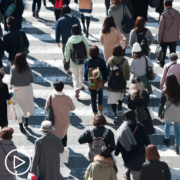
How Can We Address Disparities in AML Among Diverse Populations? |

|

What Promising AML Treatments Are Available for Newly Diagnosed Patients? |
Transcript:
Art:
Dr. Lai, for newly diagnosed AML patients, what are the latest available therapies?
Dr. Catherine Lai:
That’s a great question. The last, I would say, a handful of years have really seen a dramatic increase in the number of new treatment options for AML patients, specifically since 2017, the FDA has approved 10 new drugs for AML, that’s both for patients who are newly diagnosed and in the relapsed refractory setting.
And so what I would say is that we break our patients into two different categories in terms of being able to tolerate intensive chemotherapy versus non-intensive chemotherapy, and as well as looking at specifically targeted mutations that patients may have so that we can better understand the disease but also treat these patients more specifically to try to maximize efficacy while minimizing toxicity.
And so specifically, I would say for patients who have FLT3 mutations, there are drugs such as midostaurin (Rydapt) and gilteritinib (Xospata), there are drugs for mutations in IDH1 and IDH2, enasidenib (Idhifa) and ivosidenib (Tibsovo) and recently, or in December of 2022, olutasidenib (Rezlidhia) was also approved for IDH1-mutated patients as well.
We have a general targeted agent that’s an oral chemotherapy that probably has made the biggest difference in how we treat patients called venetoclax (Venclexta), and that’s used in combination with azacitidine (Onureg) or decitabine (Dacogen), or low dose cytarabine (Cytosar).
Although most commonly in the United States, we use azacitidine or decitabine in combination with the venetoclax, and that I think is really what I’d say has been practice changing for the most part, in terms of both increasing the complete remission rates as well as the overall survival for these patients. So I would say there are a lot of new drugs. It is all very exciting.
The biggest activation tip in terms of takeaways is to ask your physician and your oncologist when you’re talking with them about what all the newest therapies are and what would be specifically the best treatment for their specific leukemia with respect to the different mutations.
Art:
Okay. Dr. Lai, what are the latest approaches to combination chemotherapy to treat AML?
Dr. Catherine Lai:
So, the latest approaches for combination chemotherapy would be in the combination of a hypomethylating agent, azacitidine or decitabine in combination with venetoclax. This is the most practice-changing combination that has been approved since 2017 to 2018, and now more recently, what’s been happening is now looking, so we call that a doublet, and now it’s been looking at…what we’ve been studying is now whether or not triplets are more effective, when we do have triple combinations, we do see an increase in toxicity and so on, we haven’t come up with the right algorithm in terms of what that exact formula should be, but often I think about it in kind of a three-fold in terms of wins the right time, what’s the right combination, and how do we see in the drugs, and I think the sequencing is the biggest thing that we don’t yet know, and how do we combine the two different..two different drugs in a way, and how do we give them in a way that will maximize efficacy, will minimize the toxicity, so as an example is, Do we give two drugs for a specific period of time, and then after some determined time point, do we…
And change it to a different set of combination of drugs to make sure that patients are getting the most benefit of the drugs, and we don’t know that yet, but I think that that’s where the general direction…where the landscape is heading, so the activation tip I would take home from this is just to have a conversation with your physician about potential clinical trials and how combination therapies are being used.
Share Your Feedback About [ACT]IVATED AML
[ACT]IVATED AML Resource Guide
Advances in AML Research | Where Do Clinical Trials Fit In?
Advances in AML Research | Where Do Clinical Trials Fit In? from Patient Empowerment Network on Vimeo.
How do clinical trials advance acute myeloid leukemia (AML) research? Dr. Farhad Ravandi-Kashani discusses newer AML treatments that have changed the landscape of care and how patient trial participation moves research forward.
Dr. Farhad Ravandi-Kashani is professor of medicine and Chief of the Section of Developmental Therapeutics in the Department of Leukemia at The University of Texas MD Anderson Cancer Center in Houston, TX. Learn more about Dr. Ravandi-Kashani.
Related Resources:

|

|

|
Transcript:
Laura Beth:
When it comes to AML research and emerging treatment options, what are you excited about right now?
Dr. Ravandi:
Well, I think one of the biggest, I would call, revolutionary changes in AML was the introduction of venetoclax (Venclexta), because AML is a disease of the older population.
The median age is about 68, which means half of the patients are older than 68, and among the other half, majority are older than 55. And when you go beyond 60, 65, traditional chemotherapy is not well-tolerated. But the introduction of venetoclax plus azacitidine (Onureg) or decitabine (Dacogen), depending on the center, has really completely changed the management of older AML patients from a situation that it was dismal treatment to a situation that’s still not great, but it’s a lot better, as in we don’t cure the majority, but many people have a tolerable therapy and live with their disease for several months if not several years.
And personally, I have treated a 97-year-old patient, and she did well for three years, so. Because of this drug, age is no longer as frightening as it used to be for advanced age.
Laura Beth:
So, where do clinical trials fit in when it comes to choosing treatment?
Dr. Ravandi:
So, the best drugs that we have available now, the venetoclax that I mentioned and all the other drugs that I mentioned, targeted drugs, came from clinical trials.
If we don’t do clinical trials, we would be still doing the same treatments that we were doing in the 1970s and ‘80s.
In fact, up until about seven or eight years ago, many places were still doing the same treatments that was developed in 1970s, which in the era of computers, and Apple, and everything else, it’s mindboggling that we should be doing something that we were doing in the ‘70s. So, clinical trials are important to move the field forward. They are at major academic centers, all the clinical trials are extremely well-vetted and scientifically vetted, as well as with institutional review boards, ethically vetted. So, patients can be sure that they’re not going to get anything less and potentially more than what they would normally get.
AML Research Updates: News From ASH 2020
AML Research Updates: News from ASH 2020 from Patient Empowerment Network on Vimeo.
AML expert Dr. Jeffrey Lancet shares the latest news from the 2020 American Society of Hematology (ASH) annual meeting. Dr. Lancet sheds light on headlines from the meeting including FLT3 inhibitor research, combination therapies with venetoclax, a promising inhibitor therapy, and shares his optimism about the future of AML treatment.
Dr. Jeffrey Lancet is Chair and Program Lead in the Department of Malignant Hematology at Moffitt Cancer Center in Tampa, FL. He is nationally and internationally recognized for his clinical research in the field of acute leukemias. Learn more about Dr. Lancet, here.
Related Resources:

|

|

New AML Therapies vs. Traditional Chemotherapy: What’s the Difference? |
Transcript:
Katherine:
Hello, and welcome. I’m Katherine Banwell. Today we’ll discuss the latest news from ASH 2020 and how AML patients can advocate for personalized care. Joining me is Dr. Jeffrey Lancet. Welcome. Would you please introduce yourself?
Dr. Lancet:
Hi, sure. My name is Dr. Jeff Lancet. I’m at the Moffitt Cancer Center in Tampa, Florida, where I am the Chair of the Malignant Hematology Department. We spend a lot of time treating patients and conducting clinical trials of Acute Myelogenous Leukemia.
Katherine:
Okay. Thank you. Dr. Lancet, the American Society of Hematology Annual Meeting just closed. What are the AML headlines from this year’s meeting?
Dr. Lancet:
Yeah, so as usual, AML was a very busy area for clinical presentations this year at the ASH meeting focusing largely on novel and targeted therapies.
I don’t believe that there were many practice changing developments per se, but rather discussions about many promising therapeutic strategies that are still under development and moving forward rapidly largely in the areas of targeted therapy, low intensity therapy, measurable residual disease and things of that nature.
Katherine:
What does this research news mean for patients?
Dr. Lancet:
Well, I think that there’s a lot to be encouraged about and maybe I’ll take the time to review some of the highlights in what was presented with respect to some of the novel therapeutic approaches that many of our patients can look forward to receiving in the not too distant future.
So, we often talk about you know, targeted therapies and, of course, one of the major targets over the years has been that of mutated FLT3 which is one of the most common mutations in AML.
And at this meeting we saw several presentations on clinical trials resolved to utilizing inhibitors of FLT3, with some emphasis on the most recently approved second generation drug called gilteritinib.
There were I thought three major presentations focusing on gilteritinib and one was an update on a randomized Phase III trial comparing gilteritinib plus azacitidine versus azacitidine alone in newly diagnosed unfit for induction chemotherapy patients with FLT3 mutations, preliminarily showing good tolerability and high composite complete response rates in the combination on.
There was another trial of gilteritinib plus venetoclax in relapsed and refractory FLT3 mutated AML.
And what was interesting was that a very high percentage of patients achieved response with this combination of gilteritinib plus venetoclax, many of whom were heavily pretreated previously and many of whom had also gotten prior FLT3 inhibitor therapy during an early stage of the disease. So, the combination of gilteritinib and venetoclax and this more refractive study, it was encouraging to see these promising responses.
And then we saw some data reporting the effects of gilteritinib in combination with more traditional chemotherapy induction with a couple of studies demonstrating both a high complete response rates as well as high rates of mutation clearance of the FLT3 mutation.
So, those were very encouraging data that were presented with respect to the FLT3 mutated AML population.
So, another very important drug that reached the marketplace for AML recently is a drug called venetoclax, which is an inhibitor of a protein called BCL2.
And this drug was recently FDA approved for use in combination with low intensity chemotherapy drugs such as azacitidine or decitabine.
And it seems as though the combination of venetoclax plus one of these hypomethylating agent drugs, azacitidine or decitabine has resulted in very, very strong efficacy signals as recently published in a New England Journal of Medicine paper that reported on the results of the Phase III trial of venetoclax plus azacitidine.
So, that has now become standard of care for older less fit adults with newly diagnosed AML; the combination of venetoclax plus a hypomethylating agent such as azacitidine.
And naturally, there’s been interest in really kind of taking it several steps further to advance the role of these combinations and to also look at additional drugs in combination with venetoclax plus hypomethylating agent therapy.
So, we saw some of that at the ASH meeting this year. One approach would be to take venetoclax and then to combine it with more intensive chemotherapy for perhaps more fit patients or younger patients that could undergo a more intensive program.
So, we saw presentations of venetoclax being combined with a drug called CPX-351, which is a novel liposome formulation of two common chemotherapy drugs that had been approved a few years ago for secondary AML. And we also saw a combination strategy with venetoclax, and a regimen known as FLAG-IDA, which is a commonly used induction regimen in acute myeloid leukemia.
And I think it’s important to recognize that although these trials that combine the venetoclax with more intensive chemotherapy showed signs of good efficacy with good response rates, there were definitely signals of increased toxicity, hematologic toxicity primarily, which is not completely unexpected with venetoclax knowing that it can cause significant lowering of white blood cells and platelets and hemoglobin.
And then finally, there is a lot of interest in, you know, doing these types of combinations with venetoclax in different subsets of AML and one subset of AML that has been very important recently is that of the IDH mutated AML population of patients.
IDH is a fairly common mutation that occurs either in the Isoform of IDH1 or IDH2 and there’s about a 15 to 20 percent incidence of IDH mutations in AML.
Now we do have an inhibitor for both of these types of mutations: ivosidenib for IDH1 and enasidenib for IDH2, but there also appears to be a strong role for venetoclax plus azacitidine in IDH mutated AML.
We saw from a series of patients presented by a physician at MD Anderson looking at outcomes with venetoclax plus azacitidine in IDH mutated AML. And the response rates were very high when you give HMA plus venetoclax to these patients with IDH mutated AML.
But I think more importantly was that there were what we call high intro patient response rates when switching between venetoclax and HMA therapy with an IDH inhibitor containing regimen.
In other words, a patient would have a good chance of responding to the initial therapy and then if or when that therapy stops working, having a good effect from a salvage therapy with the other regimen. So, when you see initially azacitidine plus venetoclax and then had a relapse, the IDH inhibitors worked well and vice versa if you had received an IDH inhibitor and then subsequently received HMA-venetoclax at a later time point that also worked well.
So, it’s encouraging to see that you can potentially sequence these drugs and get continued responses along the way and ultimately we think will help a survivor and keep patients in a better state of health even longer.
So, I just wanted to take a few minutes also and discuss some of the newer more novel therapies that are really hitting or approaching the landscape right now. One of these is called CC486, also known as oral azacitidine or ONUREG. And this drug was shown in recent literature to prolong overall survival in patients who are in first remission from their AML who had received induction chemotherapy.
So, this drug was used as maintenance therapy after a variable number of consolidation regimens. And people who got this ONUREG or oral azacitidine drug as maintenance therapy, it resulted in longer survival compared to those who had received placebo.
And this was presented at last year’s ASH meeting, but this year’s ASH meeting provided an update, a very important update, showing that the overall survival advantage from this drug, this oral azacitidine drug, when used as maintenance was independent of whether a patient had measurable residual disease at the time that they went onto the maintenance therapy.
In other words, whether you had MRD, measurable residual disease or not at the time of the study entry, your responses were still more favorable, your outcomes were more favorable, if you received this oral azacitidine drug.
So, this was FDA approved earlier this year for patients in the maintenance phase of therapy for AML who had gotten prior reduction chemotherapy.
And importantly, this drug was also shown to be able to convert about 25% of patients who were positive for measurable residual disease; convert them from positive to negative. So, even though they were in remission, they had measurable residual disease and this drug in about 25 percent of the cases converted that from positive to negative. So, that’s a very important finding as well.
Another important drug that I think you should keep your eye on is a drug called magrolimab. This is an antibody against a certain type of protein that is present on the immune system cell called the macrophage, and when this magrolimab drug was combined with azacitidine in a recent clinical trial, it was demonstrated very high response rates of over 65 percent.
And, in particular, in patients with P53 mutations, which is a very bad mutation to have in most cancers, including AML, in patients with this high-risk mutation, the combination of magrolimab with azacitidine appears to be effective based upon the early data that we have with high response rates.
And then finally, I just wanted to make mention of another important area in, not really just AML, but in all cancer and that’s outcomes disparities between different races and ethnic groups. And we saw a very important presentation at the plenary session this year where the authors reported outcomes amongst younger patients with AML who were African American compared with Caucasian.
And the data clearly indicated a worse overall survival amongst Black patients compared with white patients under age 60. And this included patients who were enrolled in clinical trials. So, that it appeared that African American patients have a worse outcome than Caucasian patients with acute myeloid leukemia highlighting the need to better understand various risk factors and other factors that play into these disparate outcomes between our Black American population and a white American population, which I think could shed light on additional disease characteristics that may help everybody as well.

